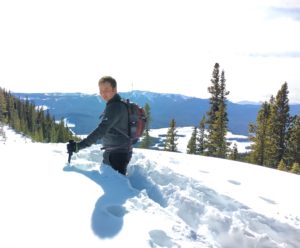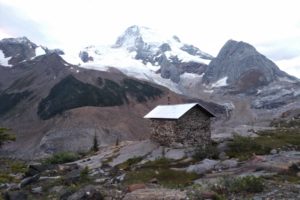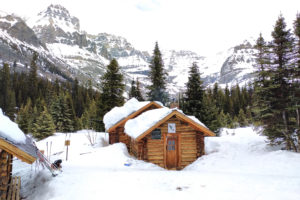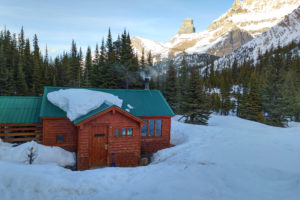- Home
- Registration
- Site Tools
- Articles
- Swap n Shop
- Contesting
- Grounding information for everyone
- History of the Central Alberta Amateur Radio Club
- CAARC owned Repeaters
- Club Repeater Info
- GMT Time Conversion Table
- VE/VA6 Incoming QSL Bureau
- Pine Lake Tornado Friday July 14, 2000.
- Amateur Radio to the Rescue
- CANWARN
- HAM Nation with Bob Heil K9EID
- Net info
- Events.
- ARES
- Links and On line study course.
- Field Day 2019
- Members D/L
- Forum/Swap and Shop
Field Day in Social Distancing and Correction about Class B
Jun 4th
CAARC Participation in 2020 ARRL Field Day
Field Day in Social Distancing and Correction about Class B
The evening of June 3rd, I watched an IARU workshop entitled “Field Day in Social Distancing,†presented by Anthony Luscre K8ZT. Anthony has done a Class B Field Day in various locations across the United States for many years. The presentation dealt with many ways of participating in Field Day while preserving distancing rules. You can watch it at https://www.youtube.com/watch?v=xLk5_BIpF6s . It is 90 minutes long, with comments and questions taking up the last 25 minutes.
As I watched it, I noticed a mistake that I made in trying to guide you. Specifically, about Class B stations. From “Field Day Frequently Asked Questions” at http://www.arrl.org/files/file/Field-Day/2019/2019-FD-FAQ-RevA.pdf :
“Convenient access across one’s backyard to their home station facilities is not in keeping with the spirit of Class A or Class B portable operations. Such convenient backyard operations on property of home stations remain either Class D (commercial power) or Class E (emergency power), even if home antenna structures are not used. If the station will be a ‘good hike’ away from a home station (eg, at the rear of a several acre lot, or perhaps operating from a farmers field down the road) – clearly away from home conveniences (away from home utilities, or home restrooms/bedrooms, or even eating facilities/refrigerator/kitchen) – then Class A (3 or more persons portable) or Class B (1 or 2 person portable) is appropriate.â€
So, it appears that the idea is that not only is your station portable, but your sustenance and upkeep should be self-contained as well. Anthony stated his feeling that if you take everything that you will need — power, apparatus, tools, food, sleeping arrangements, etc. — out of your house and plan not to go back, it doesn’t matter that much how far you go.
Background, official rules, and many hints can be found at http://www.arrl.org/files/file/Field-Day/2020/2020%20Field%20Day%20Packet(1).pdf .
ARRL’s official Field Day site is http://www.arrl.org/field-day .
Comments or questions to John VA6SJA, va6sja@rac.ca
John VA6SJA
Counting Your QSO Score
Jun 4th
CAARC Participation in 2020 ARRL Field Day
Counting Your QSO Score
We, as representatives of CAARC, encourage your participation in the 2020 ARRL Field Day on June 27 and 28, and your submission of your station score to the ARRL.
Which QSOs can you count?
Field Day QSOs take place on the 160, 80, 40, 20, 15 and 10 Meter HF bands, as well as all authorized amateur radio bands 50 MHz and above. Field Day QSOs made using amateur radio satellites are also counted, record these as a separate “Satellite†band. These must be between two amateur stations on the earth. Only one contact may be counted on any single channel FM satellite. There is some more information about using satellites on Field Day at https://www.amsat.org/field-day/ . AMSAT is hosting a complementary Field Day during the same Field Day period.
QSOs are separately counted in each band for each of the three modes of voice, CW and data (AMTOR, D-STAR (Digital Data) point-to-point., Hellschreiber, MT63, FSK441, JT6M, JT65, .FT8, Olivia MFSK, Packet Radio if used point-to-point , PACTOR if used point-to-point, PSK31, QPSK31, PSK63, QPSK63, RTTY are a few examples of data).
Only one contact with any other amateur station is counted for each band-mode. Find another station, change your mode, or change your band.
Making a Field Day QSO that counts
May 26th
CAARC Participation in 2020 ARRL Field Day
First an amendment to the last post, the second participant in a Class B station would not have to be an amateur as long as he or she is supervised while making QSOs by the licensed amateur and the amateur is ready to take over to check for the existence of a third party agreement in case there is an answer to a CQ from beyond Canada and the United States. So, an interested family member could be your partner.
Making a Field Day QSO that counts

SOTA Activations and Outdoor Operations
May 22nd
For those interested in SOTA or outdoor portable operations, I am attaching some recent photos of recent operating locations from which I have been working. In addition to SOTA activations, I do some maintenance and custodial work for the Alpine Club of Canada so I have been operating from the ACC back-country huts. The video link below is a short tour of one of the huts I visit frequently which has a short clip of my operation within the hut.
CAARC Participation in 2020 ARRL Field Day
May 21st
Paul VA6MPM has agreed to co-chair distribution of information for CAARC members’ (and any other interested amateur’s) entries in the ARRL Field Day.
We encourage your participation in the 2020 ARRL Field Day on June 27 and 28, and your submission of your individual station score to the ARRL. The 24 hours of on-air operations start at 1800Z June 27. You may operate for any convenient part of that period.
We are going to publish what we hope are bite-sized chunks about participating in Field DayThe official ARRL Classes for one or two participants are (from easiest to hardest), choose one:
- Home station using only one of your own call signs (Class D). Another licenced household member may also use this station equipment with only one of their own call signs for a separate entry. Class D stations may not count contacts made with other Class D stations. Using emergency power for a home station changes your class to Class E and allows you to claim a bonus and also allows contacts with any Field Day Station to be counted.
- Vehicular Mobile (Class C): Stations in vehicles capable of operating while in motion and normally operated in this manner. Normally used by one operator with his own call sign.
- Small group portable (Class B) set up and operated by no more than two persons. This can be your regular equipment set up so as to operate from your back yard, and I believe, your garage if it is not your regular operating position. A variant is Class B – Battery, in which All contacts must be made using an output power of 5 Watts or less and the power source must be something other than commercial mains or motor-driven generator. Set-up must start later than 0000 UTC on the Friday (Thursday afternoon or evening local time) preceding the Field Day period. Set up your station up with an effort of a total of 24 hours or less.
In the QST Field Day results each class is listed in in its own category, so in essence, you will compete with similar stations.
We will make further posts, about:
- Which QSOs can be counted and what you have to record for each QSO,
- Point score for each type of QSO
- Multipliers and bonuses
- Reporting your score
Background, official rules, and many hints can be found at http://www.arrl.org/files/file/Field-Day/2020/2020%20Field%20Day%20Packet(1).pdf .
Comments or questions to Paul VA6MPM (find his email on QRZ.com), or John VA6SJA, va6sja@rac.ca .
John VA6SJA and Paul VA6MPM
Snow birds fly over VE6BLD in Lacombe
May 16th
The Canadian Snow birds flew over Lacombe in support of all the front line covid 19 workers.
Click the video below
Click the following link to watch full video from my YouTube channel
ARISS is live now: ISS Space Chat – Airdrie Space Science Camp 5-15-2020
May 15th
CHECK OUT THE INTERNATIONAL SPACE STATION CONTACT WITH STUDENTS IN AIRDRIE ALBERTA
This will be the second test of the new-style radio contact, called Multipoint Telebridge Contact via Amateur Radio. The concept was developed for distance learning when schools closed worldwide due to COVID-19. The virus eliminated all opportunities for ARISS radio contacts at education organizations. A new ARISS telebridge radio ground station will be used this time, this operated by John Sygo, amateur radio call sign ZS6JON, near Johannesburg, South Africa.
Long-Lost U.S. Military Satellite Found By Amateur Radio Operator
Apr 24th
There are more than 2,000 active satellites orbiting Earth. At the end of their useful lives, many will simply burn up as they reenter the atmosphere. But some will continue circling as “zombie” satellites — neither alive nor quite dead.
“Most zombie satellites are satellites that are no longer under human control, or have failed to some degree,” says Scott Tilley.
Tilley, an amateur radio operator living in Canada, has a passion for hunting them down.
Click this link to read the complete story.
Bob VE6BLD
Central Alberta Amateur Radio Club Fathers Day June Picnic
Apr 12th







